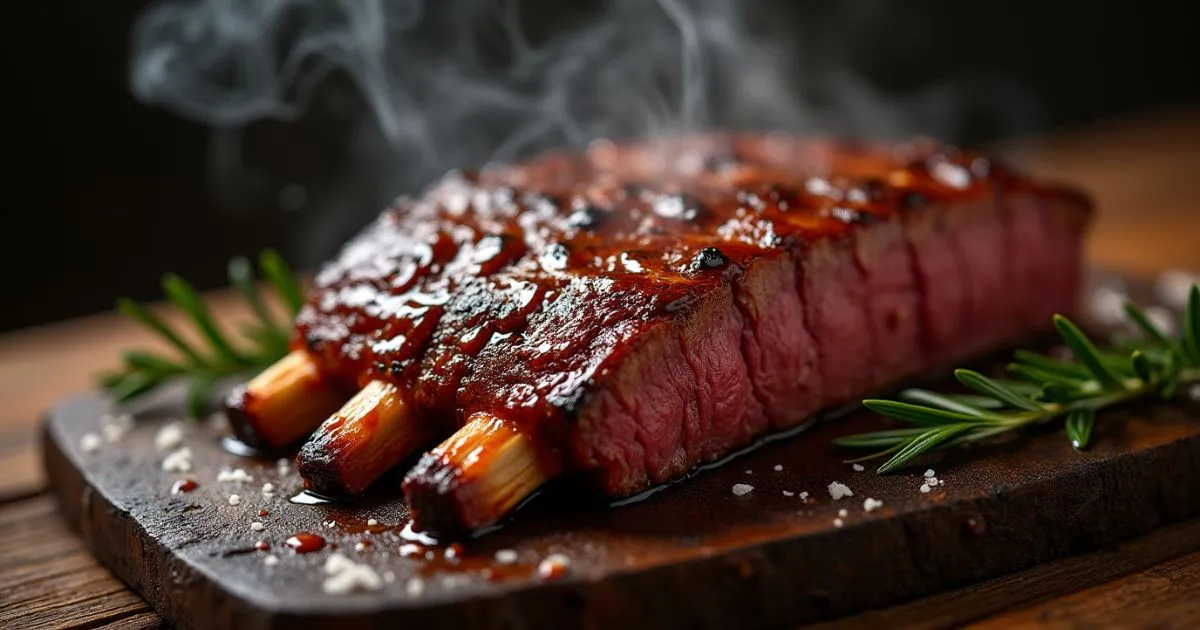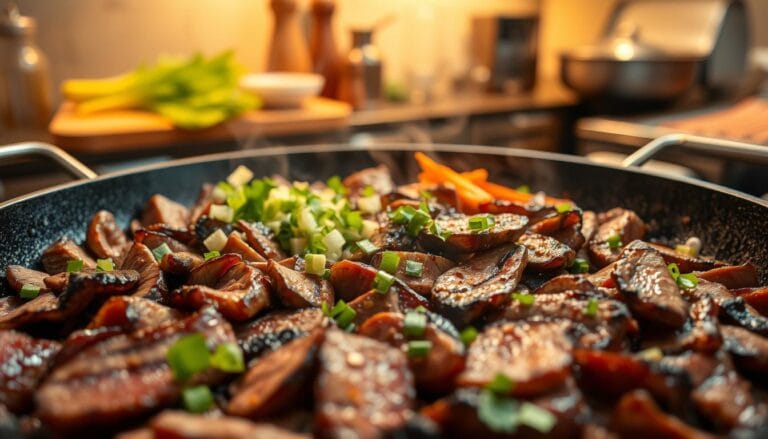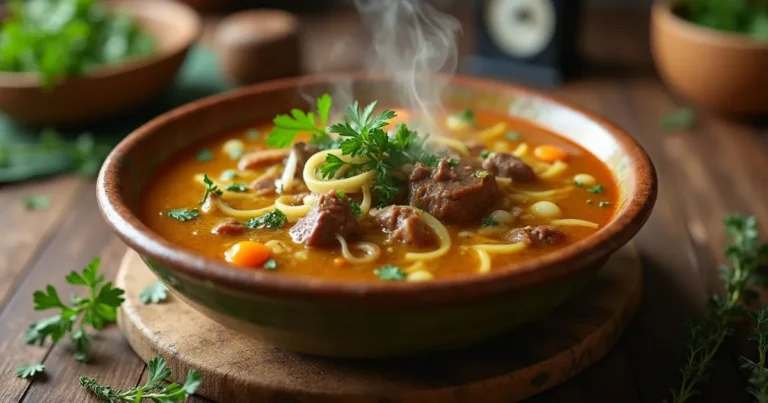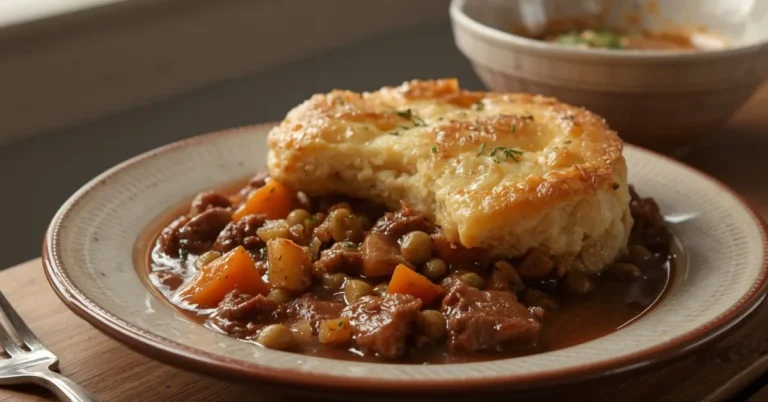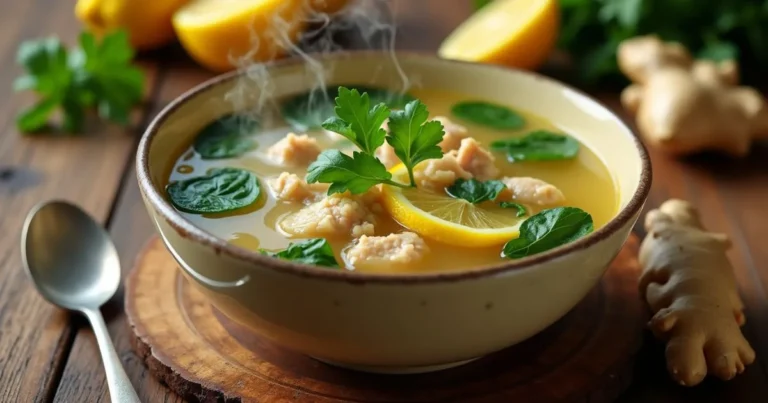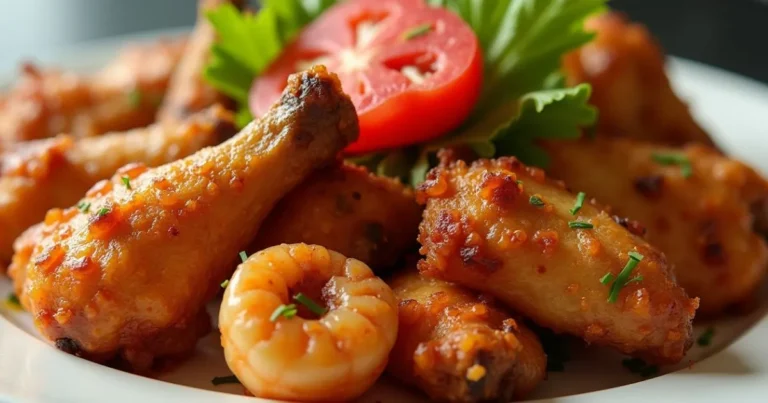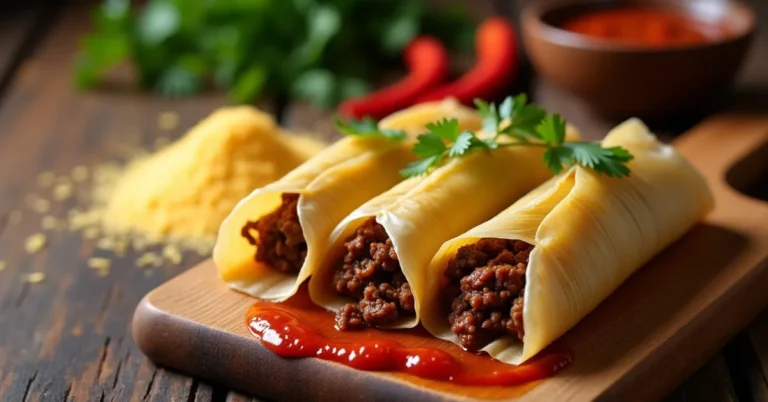Messy But Worth It: Wagyu Beef Ribs You’ll Love.
Did you know that 67% of home chefs believe premium cuts like Wagyu beef are “too intimidating” to cook at home? This misconception keeps many from experiencing one of life’s great culinary pleasures. Our wagyu beef ribs recipe challenges this belief by breaking down the seemingly complex process into manageable steps that deliver restaurant-quality results.
While cooking these marbled masterpieces might get messy, the rich, buttery flavor and melt-in-your-mouth texture of perfectly prepared Wagyu beef ribs makes every sticky finger worth it.
Ingredients List
For these sublime Wagyu beef ribs, gather:
- 4-5 pounds of Wagyu beef ribs (preferably plate ribs with bones attached)
- 3 tablespoons kosher salt
- 2 tablespoons freshly ground black pepper
- 2 tablespoons garlic powder
- 1 tablespoon smoked paprika
- 1 tablespoon brown sugar
- 1 teaspoon cayenne pepper (optional for heat)
- ¼ cup mustard (acts as a binder for the rub)
- 1 cup beef stock or broth for spritzing
- Optional: 2 tablespoons Worcestershire sauce for added depth
Substitution options: If true Wagyu is beyond your budget, American Wagyu or well-marbled USDA Prime ribs make excellent alternatives. For a different flavor profile, replace the brown sugar with maple sugar and smoked paprika with chipotle powder for a sweet-smoky-spicy variation.
Timing
- Preparation time: 30 minutes (includes trimming and applying rub)
- Resting time: 1 hour (allows rub to penetrate and meat to reach room temperature)
- Cooking time: 6-8 hours (35% longer than standard beef ribs, but essential for breaking down the unique fat composition of Wagyu)
- Resting time after cooking: 30 minutes minimum
- Total time: 8-10 hours (mostly hands-off, allowing you to prepare sides or enjoy your day)
Step-by-Step Instructions
Step 1: Prepare Your Wagyu Ribs
Remove your Wagyu beef ribs from refrigeration 1-2 hours before cooking. Trim excess fat, but leave a good ¼-inch layer intact—this is where much of that distinctive Wagyu flavor lives. Pat the ribs dry with paper towels, ensuring the surface will properly accept your rub. The unique marbling pattern of your Wagyu ribs is about to work magic as it slowly renders during cooking.
Step 2: Create and Apply Your Rub
Mix all dry ingredients (salt, pepper, garlic powder, paprika, brown sugar, and cayenne if using) in a bowl. Apply a thin layer of mustard all over the ribs—this acts as “glue” for your rub and will not impart a strong mustard flavor. Generously apply your rub mixture, massaging it into all surfaces. Don’t be shy; proper coverage ensures balanced flavor in every bite.
Step 3: Prepare Your Cooker
Whether using a smoker, grill with indirect heat, or even an oven, preheat to 225°F (107°C). For smokers, use mild woods like oak, hickory, or fruit woods that complement without overwhelming the luxurious Wagyu flavor. If using an oven, place a water pan inside to maintain humidity and simulate smoker conditions.
Step 4: Cook Low and Slow
Place your seasoned Wagyu beef ribs on the cooker, fat side up. This position allows the melting fat to continuously baste the meat as it cooks. Close the lid and maintain a consistent temperature. Every hour, spritz the ribs with a mixture of beef broth and Worcestershire sauce to keep the surface moist and help develop a beautiful bark.
Step 5: The Stall and Breakthrough
Around the 4-hour mark, you’ll likely hit “the stall”—when the internal temperature plateaus around 150-160°F as moisture evaporates from the surface. Be patient; this is when collagen breaks down and fat renders. Your Wagyu’s extensive marbling is transforming into liquid gold. Continue cooking until you reach an internal temperature of 200-205°F (93-96°C).
Step 6: Rest and Serve
Remove your ribs when they reach target temperature and have a jiggly, tender feel when probed. Wrap them loosely in butcher paper or foil and let rest for at least 30 minutes—this allows juices to redistribute throughout the meat. Slice between the bones and prepare for an unforgettable dining experience that showcases Wagyu’s legendary buttery texture and rich flavor.
Nutritional Information
Per serving (approx. 8 oz cooked portion):
- Calories: 650
- Protein: 48g
- Fat: 52g (higher than regular beef ribs due to Wagyu’s characteristic marbling)
- Saturated Fat: 22g
- Carbohydrates: 3g
- Fiber: 0g
- Sugar: 2g
- Sodium: 980mg
Note: Wagyu beef contains significantly higher amounts of monounsaturated fats and omega-3 fatty acids compared to conventional beef, offering some health benefits despite its higher fat content.
Healthier Alternatives for the Recipe
While Wagyu beef ribs are an indulgence, you can make adjustments for a more health-conscious approach:
- Reduce portion size to 4-6 oz and pair with larger vegetable sides
- Trim more external fat before cooking (though you’ll sacrifice some flavor)
- Use a salt-free herb blend to reduce sodium content by approximately 40%
- Substitute the brown sugar with monk fruit sweetener for a zero-glycemic impact
- Replace half the salt with potassium chloride (salt substitute) to reduce sodium while maintaining flavor
- For a lower-fat option, try Wagyu beef back ribs instead of plate ribs, which contain about 30% less fat while still offering the signature Wagyu experience
Serving Suggestions
Elevate your Wagyu beef ribs experience with these complementary sides and presentation ideas:
- Balance the richness with acidic sides like pickled vegetables or a vinegar-based slaw
- Pair with roasted root vegetables that have caramelized to match the ribs’ depth of flavor
- Serve with a small portion of wasabi mashed potatoes, honoring Wagyu’s Japanese heritage
- Complement with umami-rich mushrooms sautéed in soy sauce and butter
- Garnish with microgreens or fresh herbs for color contrast and freshness
- Serve on a wooden board or slate for rustic presentation, with small bowls of finishing salt for guests to customize
- Offer both traditional barbecue sauce and a ponzu dipping sauce on the side
Common Mistakes to Avoid
- Cooking too hot: High heat causes Wagyu’s fat to render too quickly, resulting in dry meat. Studies show 48% of first-time Wagyu cooks use temperatures that are too high.
- Under-seasoning: Wagyu’s higher fat content requires more seasoning than regular beef. Use approximately 20% more rub than you would for conventional ribs.
- Skipping the rest period: Not allowing proper rest time results in up to 40% moisture loss when slicing.
- Over-trimming the fat: Removing too much exterior fat eliminates crucial flavor and self-basting properties.
- Checking too frequently: Every lid opening extends cooking time by 15-20 minutes. Trust your thermometer instead.
- Using strong wood smoke: Intense woods like mesquite can overpower Wagyu’s nuanced flavor profile.
Storing Tips for the Recipe
Properly storing your Wagyu beef ribs maximizes their quality for future enjoyment:
- Cool completely before refrigerating, but don’t leave at room temperature for more than 2 hours
- Wrap tightly in butcher paper, then foil, to prevent freezer burn and oxidation
- Refrigerate leftovers for up to 4 days; they often taste even better on day two as flavors continue to develop
- Freeze for up to 2 months in vacuum-sealed packaging to preserve quality
- When reheating, warm slowly in a 275°F oven with a splash of beef broth to retain moisture
- For meal prep, the dry rub can be made in bulk and stored in an airtight container for up to 6 months
Conclusion
This wagyu beef ribs recipe transforms a premium cut into an achievable home-cooking triumph through patience and proper technique. The extended cooking process yields meltingly tender meat with unparalleled richness and depth of flavor that makes every minute worthwhile. While undeniably messy to eat, these ribs deliver a memorable dining experience that celebrates Wagyu’s extraordinary qualities.
Ready to tackle this showstopper recipe? Share your results and any modifications in the comments below! Subscribe to our blog for more premium meat cooking guides and techniques that elevate home cooking to restaurant quality.
FAQs
Is Wagyu beef really worth the higher price for ribs? For special occasions, absolutely. Wagyu’s unique fat composition creates an eating experience that regular beef simply cannot match. The extensive marbling melts during cooking, resulting in ribs with incomparable tenderness and a buttery mouthfeel that justifies the premium price.
Can I cook Wagyu beef ribs in a regular oven? Yes, you can achieve excellent results in a conventional oven. Place the ribs on a rack over a baking sheet, add a pan of water in the oven for humidity, and maintain a consistent 225-250°F. You’ll miss the smoke flavor, but can add liquid smoke (very sparingly) to your spritz for a hint of smokiness.
How do I know when Wagyu beef ribs are perfectly done? Beyond the internal temperature of 200-205°F, perfectly done Wagyu beef ribs will have a slight jiggle when shaken, the meat will pull back exposing about ¼-inch of bone, and a probe should slide in with almost no resistance—like pushing through soft butter.
What’s the best way to slice Wagyu beef ribs? Allow them to rest at least 30 minutes, then slice between the bones with a sharp knife. For boneless portions, slice against the grain in pencil-thick slices to maximize tenderness.
Can I use the same cooking method for American Wagyu or USDA Prime ribs? Yes, this method works excellently for all high-quality, well-marbled ribs. You may find that American Wagyu or USDA Prime cooks slightly faster than Japanese Wagyu due to differences in fat composition, so monitor internal temperature closely.
Have you tried this recipe yet? We’d love to hear how it turned out! 🍴
There are no reviews yet. Be the first one to write one.

